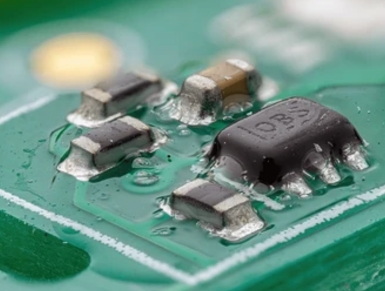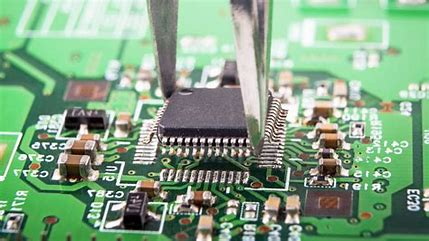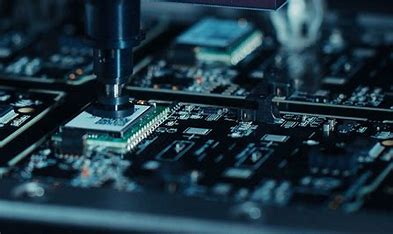Content Menu
● Understanding SMT Technology
● Key Components of an SMT Machine
● Preparation Steps Before Operation
● Operating the SMT Machine
>> Step 1: Solder Paste Printing
>> Step 2: Component Placement
>> Step 3: Reflow Soldering
>> Step 4: Inspection
● Troubleshooting Common Issues
● Best Practices for Operating SMT Machines
● Advanced Techniques in SMT Assembly
● Conclusion
● FAQ
>> 1. What is Surface Mount Technology (SMT)?
>> 2. What are the main steps in operating an SMT machine?
>> 3. How do I troubleshoot common issues with an SMT machine?
>> 4. What maintenance is required for SMT machines?
>> 5. Why is inspection important in the SMT process?
● Citations:
Surface Mount Technology (SMT) has revolutionized the electronics manufacturing industry by enabling the efficient assembly of printed circuit boards (PCBs). Operating an SMT machine requires a thorough understanding of various processes involved in surface mount assembly. This article will guide you through the essential steps and considerations for operating an SMT machine effectively.

Understanding SMT Technology
SMT is a method used to mount electronic components directly onto the surface of PCBs. Unlike traditional through-hole technology, SMT eliminates the need for drilling holes in the boards, allowing for a more compact design and higher component density. The primary advantages of SMT include:
- Increased Efficiency: SMT machines can place thousands of components per hour, significantly speeding up production times.
- Reduced Size: Smaller components allow for more compact PCB designs, which are crucial in modern electronics.
- Lower Costs: By reducing material use and assembly time, SMT can lower overall production costs.
- Enhanced Performance: The shorter electrical paths in SMT designs can lead to better performance characteristics, such as reduced inductance and capacitance.
Key Components of an SMT Machine
Before diving into operation, it's important to familiarize yourself with the key components of an SMT machine:
- Pick-and-Place Machine: This is the heart of the SMT process, responsible for placing components onto the PCB accurately.
- Stencil Printer: Used for applying solder paste to the PCB before component placement.
- Reflow Oven: This heats the assembled PCB to melt solder paste, creating permanent electrical connections.
- Inspection Systems: Automated Optical Inspection (AOI) systems check for defects after assembly.
- Conveyor Systems: These transport PCBs between different stages of the assembly process, ensuring a smooth workflow.
Preparation Steps Before Operation
1. Documentation Review: Ensure that all necessary documentation, including Bill of Materials (BOM), assembly drawings, and process instructions, are available and understood.
2. Material Preparation: Gather all components and materials required for the assembly process. This includes selecting appropriate feeders based on component specifications.
3. Machine Setup:
- Adjust the guide rail width according to PCB dimensions.
- Set up feeders with the correct components, ensuring they are clean and functional.
- Program the pick-and-place machine with coordinates for each component based on CAD files.
- Verify that all software settings are correct and that any updates have been applied.
4. Testing Equipment: Before starting production, conduct tests on equipment to ensure everything is functioning correctly. This includes checking solder paste viscosity and ensuring that all nozzles are clean and operational.
Operating the SMT Machine
Step 1: Solder Paste Printing
The first step in the SMT process involves applying solder paste to the PCB. This is typically done using a stencil printer:
- Place the stencil over the PCB.
- Use a squeegee to apply solder paste through the stencil openings onto designated pads.
- Inspect the printed solder paste for consistency and coverage. Proper application is crucial as insufficient or excessive solder can lead to defects during reflow.
Step 2: Component Placement
Once solder paste is applied, it's time to place components:
- Load PCBs into the pick-and-place machine.
- The machine will pick components from feeders using vacuum nozzles and place them onto the solder paste on the PCB according to programmed coordinates.
- Ensure that each component is correctly aligned with its respective pad before proceeding. Misalignment can lead to poor solder joints or even component damage during reflow.
Step 3: Reflow Soldering
After component placement, PCBs are sent through a reflow oven:
- Gradually heat the PCB in multiple zones to melt the solder paste.
- Maintain precise temperature control to avoid damaging sensitive components or creating poor solder joints. A typical reflow profile includes preheat, soak, reflow, and cooling stages.
Step 4: Inspection
Post-soldering inspection is critical:
- Use AOI machines to verify correct component placement and solder joint quality.
- Address any defects identified during inspection before proceeding with further processing. Common defects include tombstoning (where one end of a component lifts off), insufficient solder joints, or misaligned components.

Troubleshooting Common Issues
Operating an SMT machine can sometimes lead to issues that require troubleshooting:
- Misalignment of Components: Check programming settings and ensure that nozzles are clean and functioning properly. Adjust feeder positions if necessary.
- Solder Paste Issues: If solder paste does not adhere properly, inspect stencil alignment and paste consistency. Consider adjusting squeegee pressure or speed during application.
- Defective Components: Ensure that all components are within specifications and free from damage before loading into feeders. Implement a quality check on incoming materials.
Best Practices for Operating SMT Machines
To maximize efficiency and minimize errors when operating an SMT machine:
- Regularly maintain and calibrate machines to ensure optimal performance. Schedule routine checks on critical components such as nozzles, feeders, and conveyors.
- Train operators thoroughly on both machine operation and troubleshooting techniques. Continuous training programs can help keep staff updated on new technologies or methods.
- Implement quality control measures at each stage of production to catch errors early. This could include visual inspections or automated checks at various points in the assembly line.
Advanced Techniques in SMT Assembly
As technology evolves, so do techniques used in SMT assembly. Here are some advanced practices that can enhance your operations:
1. Use of Advanced Materials: Explore newer solder materials that offer better thermal performance or lower melting points which can be beneficial for sensitive components.
2. Automation Integration: Consider integrating Industry 4.0 technologies such as IoT sensors that provide real-time data about machine performance and product quality.
3. Flexible Manufacturing Systems (FMS): Implement FMS that allows for quick changeovers between different product lines without significant downtime.
4. Data Analytics: Utilize data analytics tools to monitor production metrics continuously; this can help identify trends or potential issues before they become significant problems.
5. Environment Control: Maintain optimal environmental conditions such as humidity and temperature within your manufacturing area to prevent issues related to static electricity or moisture absorption by sensitive components.
Conclusion
Operating an SMT machine involves several critical steps that must be performed with precision and care. From preparation through inspection, each phase contributes to producing high-quality electronic assemblies. By understanding these processes and adhering to best practices, operators can enhance productivity while minimizing defects in their products. As technology continues to advance, staying informed about new techniques and tools will be essential for maintaining competitiveness in this rapidly evolving industry.

FAQ
1. What is Surface Mount Technology (SMT)?
SMT is a method used in electronics manufacturing where components are mounted directly onto the surface of PCBs without drilling holes, allowing for more compact designs and increased efficiency.
2. What are the main steps in operating an SMT machine?
The main steps include solder paste printing, component placement, reflow soldering, and inspection of assembled PCBs.
3. How do I troubleshoot common issues with an SMT machine?
Common issues can be addressed by checking component alignment, inspecting solder paste application, ensuring feeder functionality, and verifying programming settings on machines.
4. What maintenance is required for SMT machines?
Regular maintenance includes cleaning nozzles, calibrating machines, checking feeder functionality, and ensuring all parts are in good working condition.
5. Why is inspection important in the SMT process?
Inspection ensures that all components are correctly placed and that solder joints meet quality standards, preventing defects that could lead to product failure.
Citations:
[1] https://www.neodensmt.com/news/correctly-operation-smt-machine-49671950.html
[2] https://www.wevolver.com/article/smt-process
[3] https://www.youtube.com/watch?v=HRvADApuyzA
[4] https://www.hayawin.com/resources/how-to-operate-smt-machine.html
[5] https://www.youtube.com/watch?v=9uet6TNtUXI
[6] https://www.viasion.com/blog/smt-manufacturing-process-step-by-step-guide/
[7] https://www.linkedin.com/pulse/smt-patch-machine-detailed-operation-step-process-%E6%97%AD%E4%B8%9C-%E8%A2%81
[8] https://www.hayawin.com/resources/how-to-operate-smt-machine-15158.html
[9] https://vicoimaging.com/smd-and-smt-comprehensive-guide/
[10] https://www.jt-int.com/a-beginners-guide-to-smt-process-flow/




















